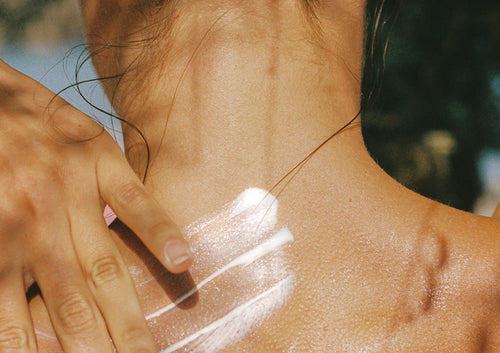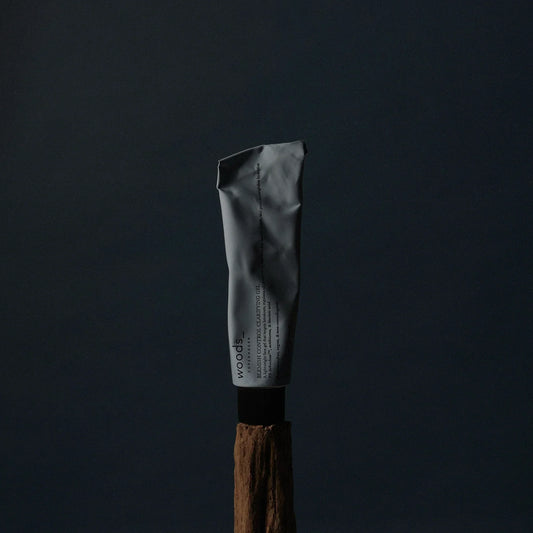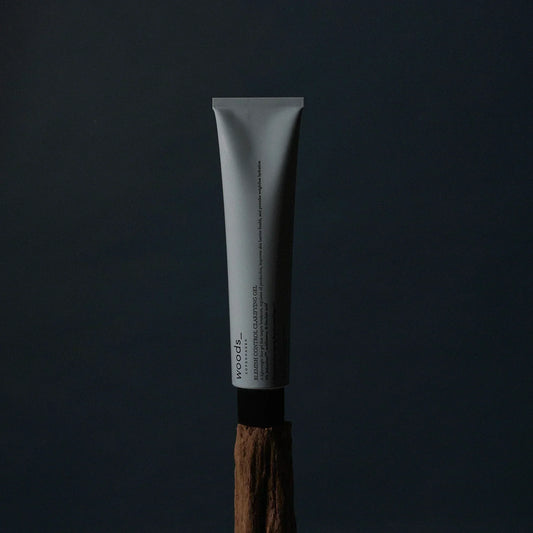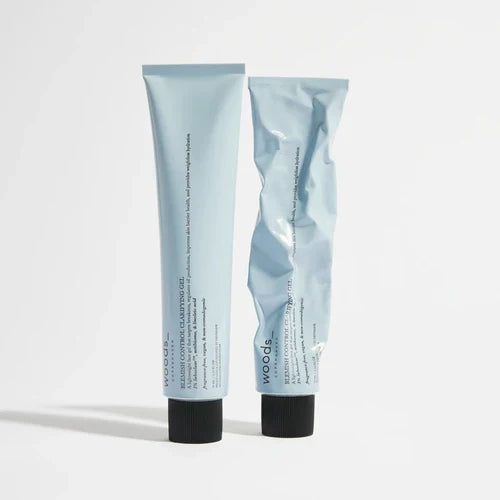What is UV… generally?
Don’t worry – at woods_, no question is too simple, and we’d love to elaborate. So, let’s take it from the top.
UV is short for ultraviolet, and UV radiation is a form of electromagnetic energy that is most often exposed to your skin via sunlight.
Besides providing your skin with a luminous tan, UV rays can have numerous damaging effects on the skin, such as accelerating premature signs of aging, encouraging discoloration as well as sunburn, and in the worst cases, lead to skin cancer.
Therefore, a protective sunscreen is a must for every routine regardless of your skin type. To know which one will fit your skin the best, visit our blogpost on HOW TO CHOOSE THE RIGHT SUNSCREEN.
The different types of UV rays are divided into wavelengths, with UVA being the longest followed by UVB. If you want to learn more about the difference, simply keep reading.
UVA rays
UVA rays can penetrate both windows and clouds, and they also have the ability to penetrate deeper within the skin than UVB rays.
This means that UVA rays can affect the skin in its deepest layers, with some cases even leading to an indirect change in DNA. This means that UVA rays can affect the skin in its deepest layers.
The damaging effects of UVA rays include premature signs of aging such as sagging skin and wrinkle formation, but these types of rays are also associated with some forms of skin cancers.
On a more fun note, they often show up on the skin as an immediate tan (or sunburn... but that’s not as fun).
UVB rays
Let’s sum up the difference between UVA and UVB rays to begin with: While UVA rays are less powerful but penetrate deeper in the skin, UVB rays penetrate less, but are more powerful.
This means that even though UVB rays affect the utmost layer of skin, they are also a common cause of skin cancers, while having the ability to also expedite premature signs of aging.
What’s characteristic about UVB rays is that they cause delayed reactions in the skin. This means that effects such as a tan, sunburns, or blisters will show up after a short period of time in contrast to the immediate consequences of UVA rays.
UV-rays, meet broad-spectrum formulas
Though sunlight is known to affect our mood positively, the same unfortunately doesn’t go for our skin. Meaning, though you might like the tinted bronze of a natural tan, neither UVA nor UVB rays are really doing your skin any favors.
But we can’t avoid sun exposure – and we shouldn’t either (some of our best memories are made in the sun!). So, what’s the solution?
Meet broad-spectrum formulas. As the name suggests, these types of formulas protect the skin with filters that defend the skin against both UVA and UVB rays to make sure it stays strong, youthful, and healthy.
Want to indulge your skin with all the wonderful effects? Visit woods_ website now for natural, fragrance-free, and broad-spectrum sunscreens.
Related Category
More posts
-
Adult acne: from cause to treatment
While many associate acne and blemishes with the turbulent teenage years, the reality is that many adults continue to grapple with breakouts well into their 20s, 30s, and beyond. But...
Read more -
Skincare for teens: a step-by-step guide
Navigating skincare as a teenager (or honestly, just as much as an adult) can feel like a maze. In this digital age, we’re constantly flooded with the newest trends and...
Read more -
Introducing: blemish control clarifying gel
Breakouts are one of the most common skin concerns, affecting people of all ages and skin types. And when it comes to treating blemishes, striking the perfect balance can be...
Read more
- Choosing a selection results in a full page refresh.
- Opens in a new window.




